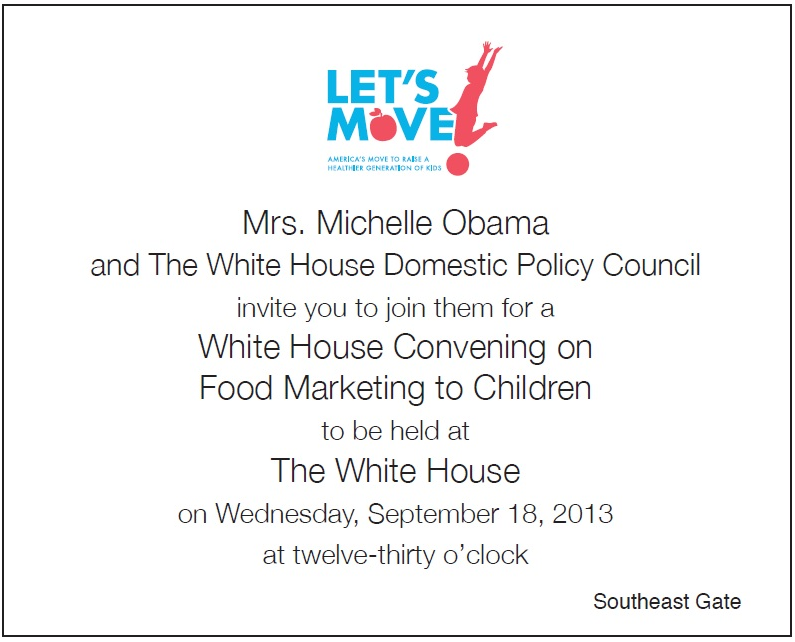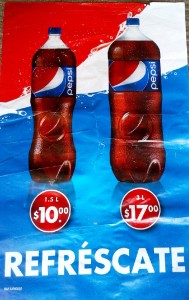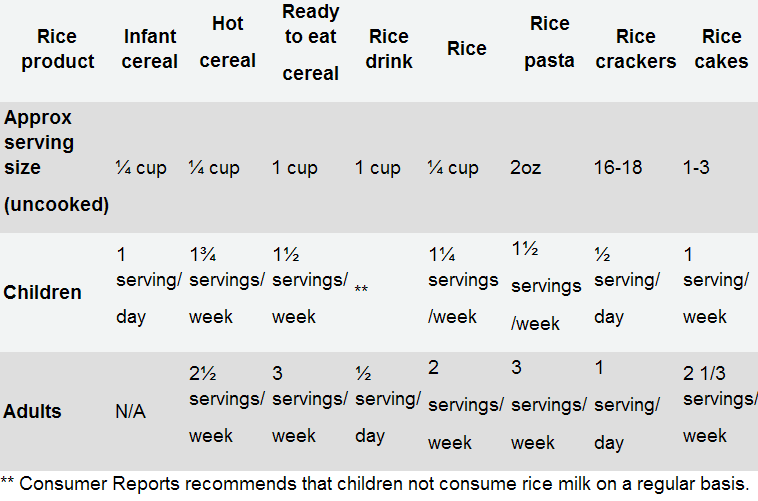If kids really are to eat more healthfully, food and beverage companies have to stop pushing products at them. But if companies don’t market to kids, they lose money. Regulation would solve the problem, but is not politically feasible. Voluntary efforts are limited to companies that agree to participate. Short of regulation, what more can be done?
This invitation felt like history in the making. I accepted with pleasure.

Mrs. Obama’s speech alone was well worth the trip.

You can see it for yourself thanks to Eddie Gehman Kohan, who posted a video and a transcript of the speech on her ObamaFoodorama site.
Here is a small excerpt:
And I’m here today with one simple request — and that is to do even more and move even faster to market responsibly to our kids…the goal here is to empower parents instead of undermining them as they try to make healthier choices for their families. And we need you to lead the way in creating demand for healthy foods so that kids actually start “pestering” us for those foods in the grocery store. And then parents actually start buying them, and then companies have incentives to make and sell even more of those foods.
And ideally, in a decade or so, we would see a dramatic shift across the entire industry. We’d see companies shifting marketing dollars away from those less healthy products and investing those dollars in your healthier products instead…See, the decisions that you make about marketing won’t just affect what our kids are eating today — those decisions are going to also affect the health of your workforce tomorrow…. You see, over the past few years, we’ve seen some real changes in the foods our kids are eating, starting from the time they’re born…this isn’t just some passing trend or fad.
So there might be those out there whose strategy is to just wait this out — folks who might still be thinking to themselves, well, in a few years, this lady will be gone — (laughter) — and this whole Let’s Move thing will finally be over, so we can go back to business as usual. And I know that none of you here are thinking that way. (Laughter.) But if you know anyone who is — (laughter) — you might want to remind them that I didn’t create this issue, and it’s not going to go away three and a half years from now when I’m no longer First Lady.
Obama Foodorama also posts the list of who attended. This was a diverse group of representatives of the food industry, trade associations, media, government agencies, private organizations, and universities who sought common ground.
A few points seemed clear from the discussion:
- Some food companies are making substantial progress in trying to reduce their marketing of less healthful foods.
- Advocates wish they would do more, faster.
- The business barriers are formidable.
I think it’s wonderful that the First Lady is taking on this critical topic, impressive that such diverse opinions were represented, and remarkable that this meeting, if nothing else, holds the possibility of opening the door to further discussion.
An open door is needed. As Bill Dietz, a former CDC official who was at the meeting, told FoodNavigator: “the food industry has repeatedly thwarted federal efforts to curb food marketing to kids.”
Center for Science in the Public Interest has some suggestions for what the next steps should be.
Cheers to Let’s Move! for taking this on.









